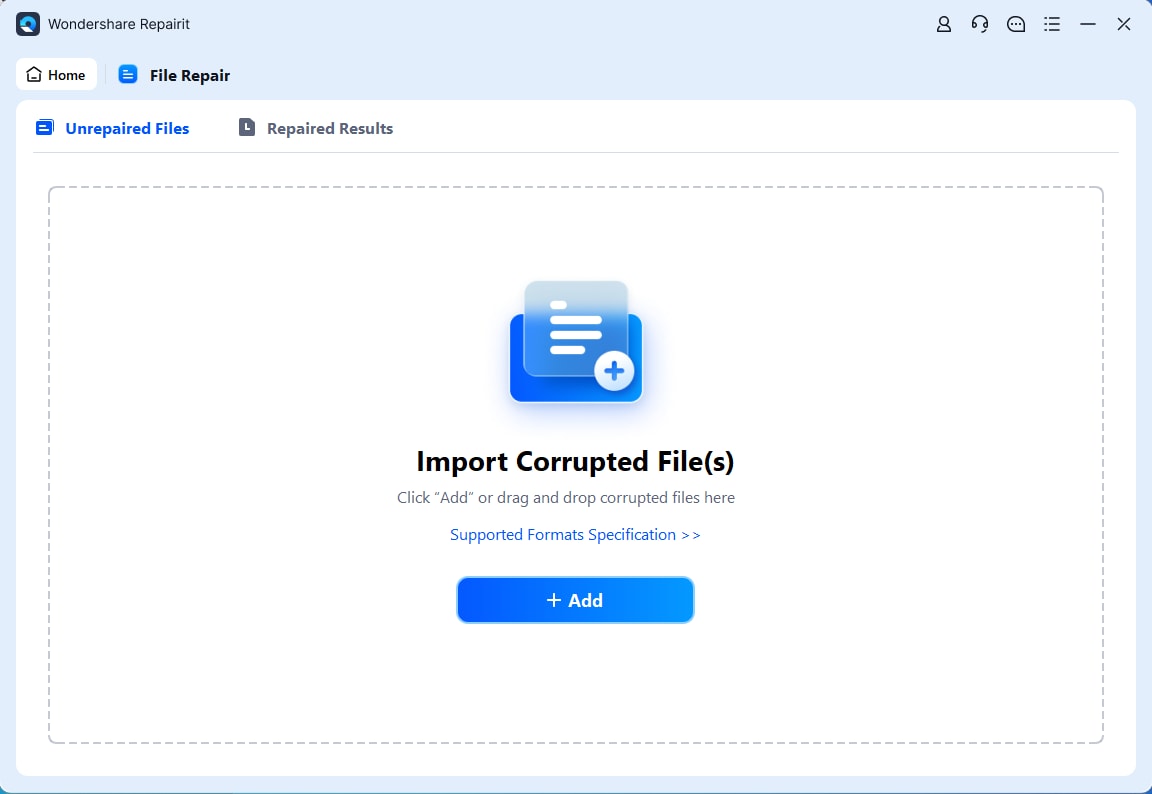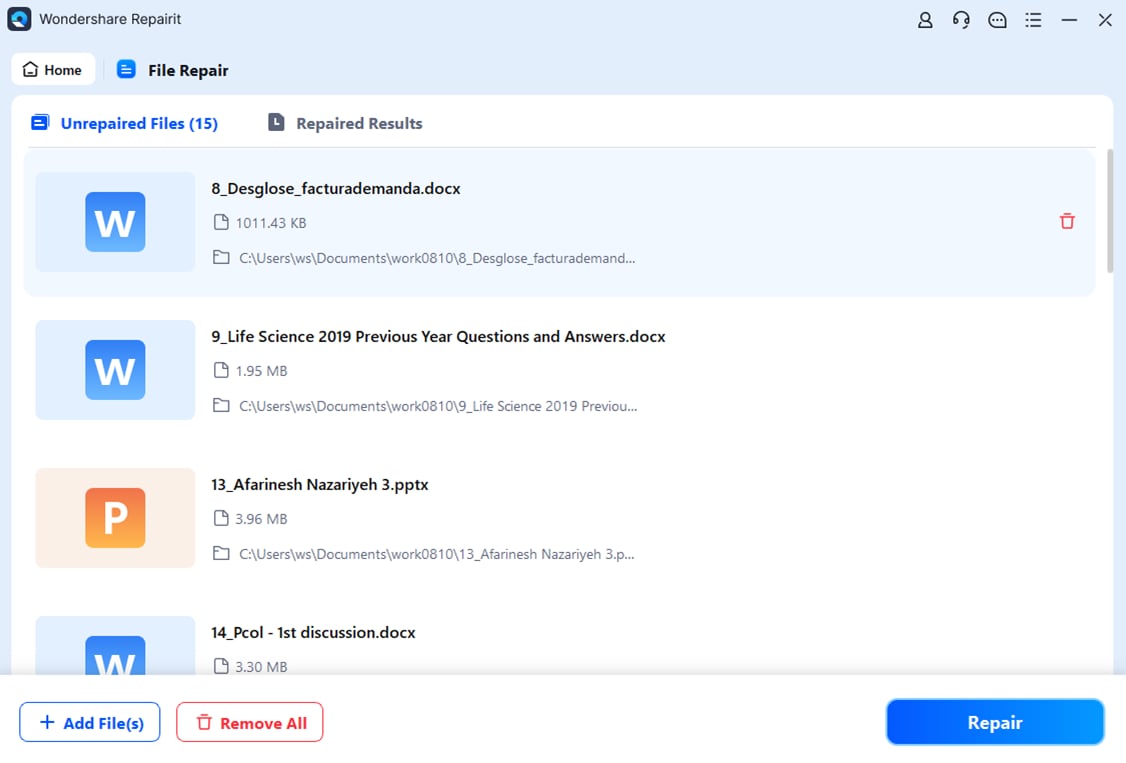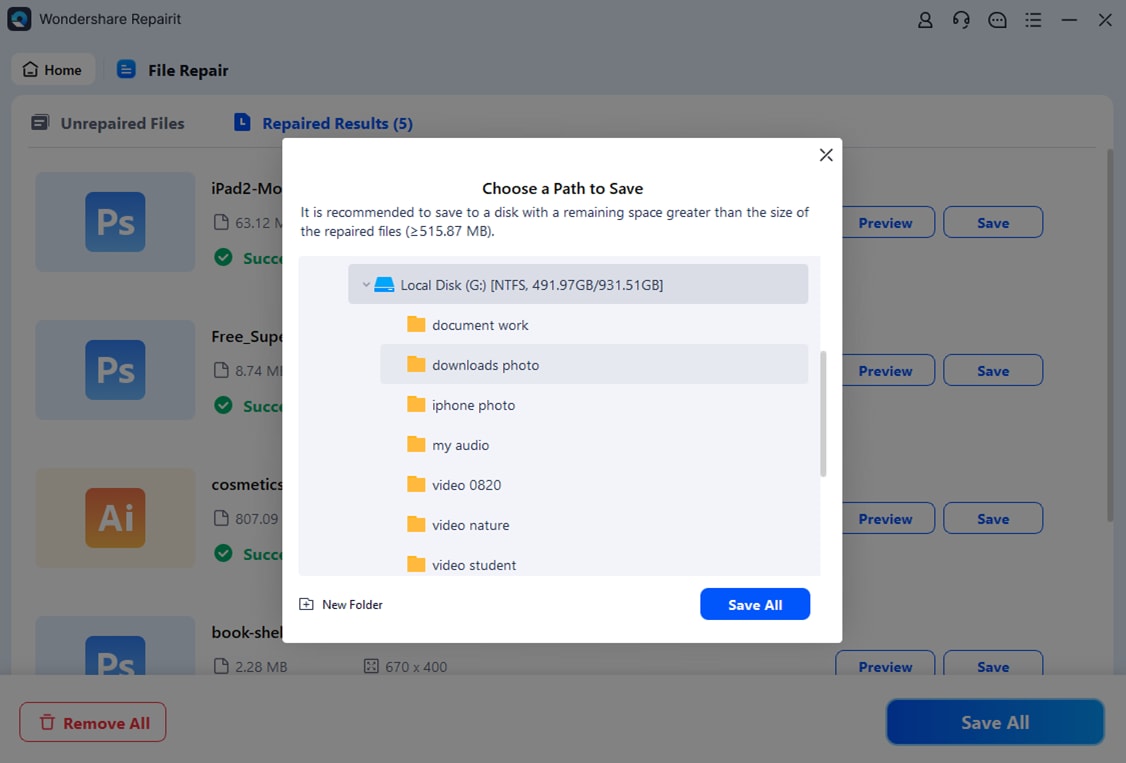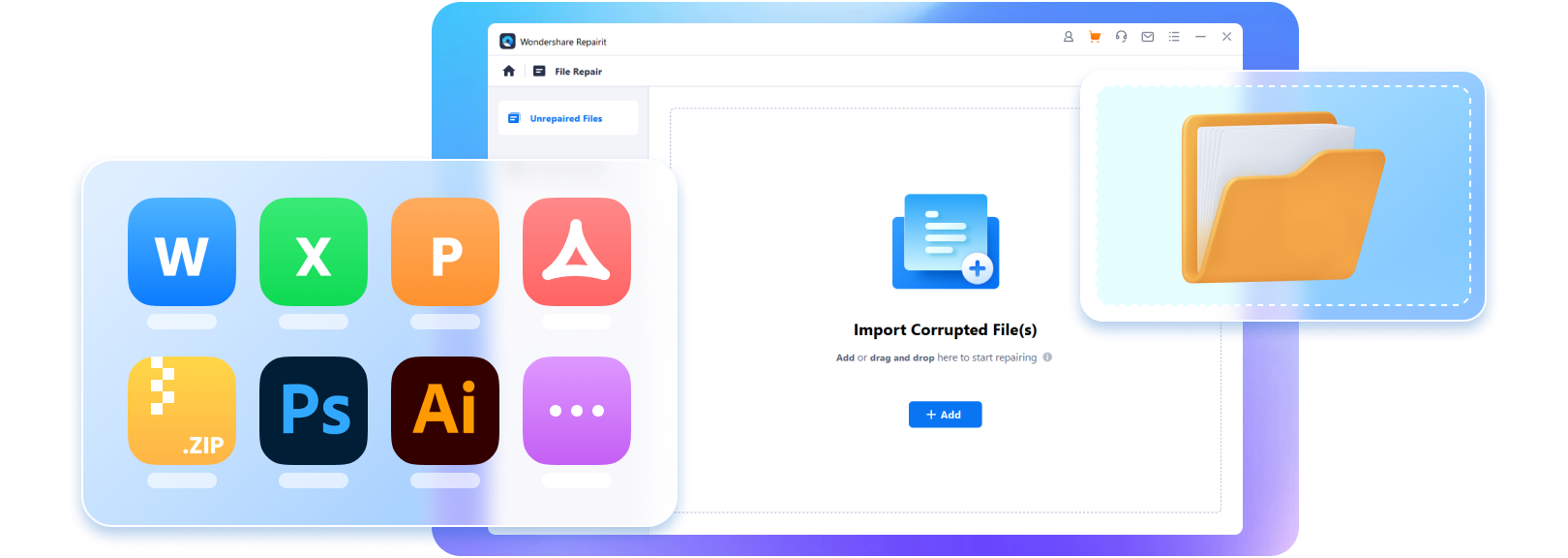"Hey! I am a business owner who compiles important inventory within Excel. But, when I tried to open my Excel file for a weekly check, the file was lost. Does anyone there know how to recover lost Excel files?"
If you are using Excel and face lost files, then it is a problem. This issue is so serious that it may affect your entire business. To solve the lost Excel files issue, this article is made so that we can teach you how to recover lost Excel files. Let's dive in if you have time to learn and browse the entire article!
In this article
-
- Tip #1. Recover Lost Excel Files with a Professional Tool
- Tip #2. Recover Lost Excel Files with AutoRecover
- Tip #3. Recover Lost Excel Files with Recycle Bin
- Tip #4. Recover Lost Excel Files with File History
- Tip #5. Recover Lost Excel Files with OneDrive
- Tip #6. Recover Lost Excel Files with Windows File History
Part 1. Why Recover Lost Excel Files?
Here are some common situations that will answer why you need to recover lost Excel files:
- You didn't save the Excel file before closing it and ignored the "Microsoft Excel Save Your Changes" warning.
- Your PC crashed while you were working on an Excel workbook, and you didn't have the chance to save the latest version.
- Excel software bugs caused the app to crash, leading to the accidental loss of an Excel worksheet or workbook.
- Someone deleted an Excel workbook from your PC's local storage.
- You deleted an Excel file and emptied your PC's Recycle Bin.
- Your PC restarted due to a power failure or hardware malfunction while you were working on an Excel workbook saved locally.
- Someone added new content to the Excel workbook you were working on, and you need to revert to a previous version.
Part 2. Top 6 Tips on How to Recover Lost Excel Files
To solve the said situations above, we gathered six tips on how to recover lost excel files. Here, you can choose what is best for your convenience. Let’s check them out:
Tip #1. Recover Lost Excel Files with a Professional Tool [BEST]
Imagine that you are using Excel files for important inventories and once you check the files, it is gone. In this situation, a professional tool like Repairit Excel File Repair Tool can help you recover your Excel files. With its amazing features and user-friendly interface, you can quickly and safely repair multiple .xlsx files simultaneously.

Wondershare Repairit - Excel File Repair
1,010,994 people have downloaded it.
-
Repair damaged Excel files with all levels of corruption, including blank files, files not opening, unrecognizable format, unreadable content, files layout changed, etc.
-
Repairs all kinds of data stored in damaged Excel files such as tables, charts, formulas, comments, images, etc.
-
Support all formats of Excel files: XLSX/XLSM/XLTX/XLTM/XLS
-
Perfectly repair corrupted files with a very high success rate, without modifying the original file.
-
No limit to the number and size of the repairable files.
-
Support Windows 11/10/8/7/Vista, Windows Server 2003/2008/2012/2016/2019/2022, and macOS 10.10~macOS 13.
-
Except Excel, Repairit also supports all formats of PDF, Word, Excel, PowerPoint, ZIP, and Adobe files.
Aside from recovering lost Excel files, Repairit Excel File Repair can fix all Excel corruption issues, including unrecognizable formats and unreadable content. Regarding compatibility, it supports Microsoft Excel 2019, 2016, 2013, 2010, 2007, and Office 365.
Here’s how to use Repairit Excel File Repair to recover lost or damaged Excel files:
Step 1: Once downloaded and launched, go to the "File Repair." Hit "+Add" to upload your damaged Excel files. Repairit allows you to upload several damaged Excel files at once.

Step 2: Hit "Repair" to start the repair procedure. You may observe how Repairit recover your excel files.

Step 3: For the results, click "Preview" next to any file's icon. If you're happy with it, hit "Save" to save the recovered Excel file to a chosen spot on your Windows PC.

Recover Lost Excel Files with Repairit Excel Fixer Now

Tip #2. Recover Lost Excel Files with AutoRecover
Didn’t you save the deleted file? Don't worry; there’s still a good chance to recover your unsaved Excel file. Excel automatically saves a temporary version of your file every 10 minutes, even if it’s unsaved. Follow these steps to access these temporary versions:
Step 1. Open Excel, click "File" in the ribbon, and then go to "Open".
Step 2. Look for the option "Recover Unsaved Workbooks" or similar on the "Open" screen. Click it.

Step 3. If your unsaved Excel file is in the folder that appears, double-click to open it. Don’t forget to save it this time.
Step 4. If the folder doesn’t contain your lost file, close the dialog box and click "Options" from the "File" tab.

Step 5. Click on the "Save" pane and check the AutoRecover file location.

Step 6. Navigate to that location and look for your unsaved file.
Tip #3. Recover Lost Excel Files with Recycle Bin
When you delete a file on your Windows PC, it is sent to the Recycle Bin. You can easily restore it from there if needed. Here’s how:
Step 1. Open the Recycle Bin from the Home Screen or Start menu.
Step 2. Scroll through the list of deleted files. If you find the deleted Excel workbook, select it. Right-click and choose "Restore" from the context menu.

Step 3. The file will be moved from the Recycle Bin to its original location. Navigate to the original directory to access the recovered file.

Tip #4. Recover Lost Excel Files with File History
If you lose your Excel files, you might still recover a previous version of an overwritten Excel file. Here's how:
Step 1. Right-click on the file and select "Properties."

Step 2. In the dialog box, locate the version you want to restore.
Step 3. Click the "Open" or "Restore" buttons to access or recover the backup file.

Tip #5. Recover Lost Excel Files with OneDrive
Most personal and business Excel desktop apps now come with Microsoft OneDrive backup. When you create and work on a new Excel workbook, Excel automatically backs it up to OneDrive. If you accidentally delete the file from your PC, you can download its recent backup from your OneDrive account. Follow these steps to recover an Excel workbook from OneDrive:
Step 1. Open a blank Excel workbook. Click the File tab on the Excel ribbon menu. In the sidebar, click the Open menu. Then, hit the OneDrive icon.

Step 2. This will filter out other recent workbooks and display those backed up to OneDrive. Scroll through the list on the right-side menu to find the required Excel file.
Step 3. Click the file once to open a copy in the Excel desktop app. Hit the File tab again and select Save a Copy.
Step 4. Click Browse and choose a local directory to save the file in the Save As dialog box.
Step 5. Hit the Save button to complete the recovery process.

Tip #6. Recover Lost Excel Files with Windows File History
If you accidentally deleted an Excel workbook and can't find it in the Recycle Bin, you can use the Windows File History tool to recover a backup copy.
File History is a built-in Windows feature that regularly backs up your entire Windows installation drive. If you often save Excel workbooks in C: drive folders like Downloads or Documents, your file might be recoverable.
Here’s how to use the Windows File History tool to recover a deleted Excel file:
Step 1. Click the Start menu and type File History. Choose Restore your files with File History from the search results.

Step 2. Use the Previous Version to browse the backup history or list of backed-up files in the File History tool. Then, navigate to the folder where you originally saved your deleted Excel workbook (e.g., Downloads).
Step 3. Select the file and click the Restore to original location button or the green restore button at the bottom.

Step 4. Windows will restore the deleted file and open the target directory. You should find the restored Excel workbook there.

Part 3. How to Prevent Excel Files from Lost?
Losing important Excel files can be frustrating and costly. Fortunately, you can take several proactive steps to safeguard your files and prevent data loss. Here are five essential tips to keep your Excel files secure:
- Enable AutoSave and AutoRecover in Excel to automatically save your work and create backup copies.
- Use cloud storage services like OneDrive or Google Drive to automatically back up your Excel files.
- Activate Windows File History to back up files in your libraries, desktops, contacts, and favorites to an external drive or network location.
- Always double-check the Recycle Bin before permanently deleting files.
- Ensure you have up-to-date antivirus software. Also, regularly update your operating system and software to protect against malware.
Conclusion
Losing an Excel file is troublesome, especially when it contains critical data, right? Luckily, this article teaches you how to recover lost Excel files. You can recover your lost files by following the methods outlined in this article. But take note, it is important to take preventative measures to avoid future data loss.
FAQ
-
How can I recover a previous version of an overwritten Excel file?
You can recover a previous version using the File History tool on Windows or accessing version history if the file is stored on OneDrive. -
How often does Excel AutoRecover save a backup?
Excel AutoRecover typically saves a backup every 10 minutes by default. -
Can I recover an Excel file that was never saved?
Yes, you can use the AutoRecover feature to recover unsaved files.


 ChatGPT
ChatGPT
 Perplexity
Perplexity
 Google AI Mode
Google AI Mode
 Grok
Grok

